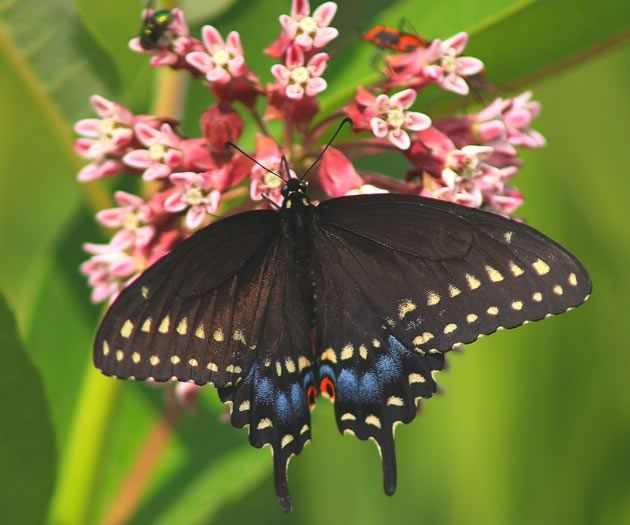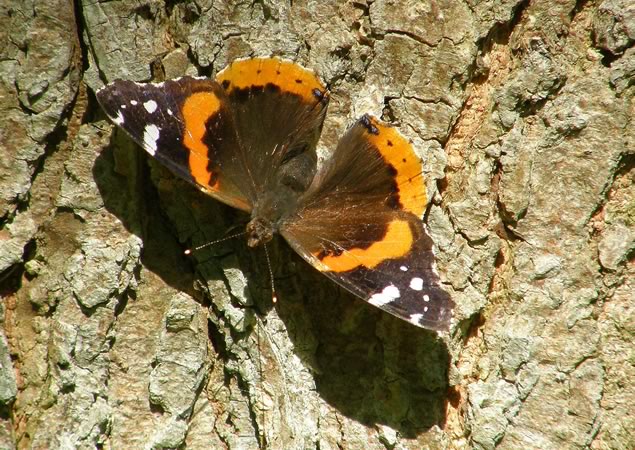Spring Butterflies
Five ways butterflies survive the winter.
Nature is endlessly inventive. When faced with a challenge she responds with a variety of solutions. For example, animals and plants exhibit a remarkable range of responses to the challenge of winter.
Butterflies illustrate this, having evolved no fewer than five ways to respond to the killing cold. Some escape south as many birds do. The magnificent autumnal flight of monarchs from Canada to Mexico is the best known example of this solution. But other butterflies migrate south as well, including red admirals and American ladies.
Some of our butterflies pass the winter as chrysalides. These exquisite capsules of possibility are lashed with silken thread to branches and other supports. Within, the dormant pupae rest until energized by spring warmth. Our swallowtails have “chosen” this solution to the problem of winter.
Viceroys, white admirals, fritillaries and most skippers overwinter as caterpillars, likely relying on some type of “antifreeze” to prevent complete freezing – a strategy also used by some of our frog species.
Still other butterflies overwinter as eggs. The tiny but exquisite hairstreak butterflies do this, as does the European skipper.
The least frequent solution to winter among our butterflies is to hibernate as adults. Commas, mourning cloaks and Compton tortoiseshells hide under peeling bark or woody debris on the forest floor to wait out the winter.
Then, on warm sunny days as early as March, they emerge to bask in the sun. What a welcome sight they are! Splashes of warm colour accenting the sombre late winter woodland.
Flying before the nectar of woodland wildflowers is available poses another challenge – where to find nourishment. For these butterflies the solution is to drink sap leaking from the wounds of winter damaged trees or from punctures in bark made by the pounding beaks of yellow-bellied sapsuckers.
Problem posed, problem solved, by the endless inventiveness of nature.
Related Stories

Attracting Butterflies to your Garden
Jan 15, 2015 | | The Flower FarmIt is especially important to have flowers in mid to late summer when most butterflies are active.

Butterflies
Jul 8, 2015 | | Notes from the WildButterflies are some of the most beautiful and interesting creatures on earth and can be easily attracted to your garden.

Butterfly Invasion
May 2, 2012 | | BlogsTwenty times more admirals than normal are moving into the province.

Caterpillars & Butterflies
Jul 25, 2011 | | Notes from the WildMost butterfly caterpillars will mature and form chrysalides within two or three weeks.

Giant Swallowtail Butterflies
Aug 9, 2012 | | Notes from the WildGiant swallowtail caterpillars are branded as “orange dogs” in the American south because they eat the foliage of citrus crops including orange trees.

Milkweed and Monarchs
Jul 25, 2014 | | Notes from the WildThe monarchs’ table was set, but alas, they wouldn’t come to dinner.

Monarch Butterfly – RIP 2026
Aug 9, 2013 | | BlogsMost of us are old enough to remember when monarchs were a frequent sight in meadows and gardens.

Monarchs: Children of the Sun
Aug 30, 2010 | | Notes from the WildMonarchs are children of the sun. The boldness of Sol this summer has energized their life cycle.











